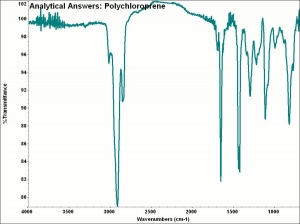Difference between revisions of "Neoprene"
m (Text replace - "== Authority ==" to "== Sources Checked for Data in Record ==") |
|||
| Line 33: | Line 33: | ||
== Additional Information == | == Additional Information == | ||
| − | ° DuPont Neoprene [http://www.dupont-dow.com/polyester/products/neoprene Website] ° M.Steinfink, "Neoprene Adhesives: Solvent and Latex" in ''Handbook of Adhesives'', I.Skeist (ed.), Van Nostrand Reinhold, New York, 1977, p.343-367. | + | ° DuPont Neoprene [http://www.dupont-dow.com/polyester/products/neoprene Website] |
| + | |||
| + | ° M.Steinfink, "Neoprene Adhesives: Solvent and Latex" in ''Handbook of Adhesives'', I.Skeist (ed.), Van Nostrand Reinhold, New York, 1977, p.343-367. | ||
== Sources Checked for Data in Record == | == Sources Checked for Data in Record == | ||
Revision as of 12:53, 12 December 2019
Description
A family of synthetic rubbers made by polymerizing chlorinated butadiene. Cchloroprene was first developed by DuPont in 1931 by Ira Williams and sold under the name of DuPrene in 1932. In 1936, DuPont changed its brand name to Neoprene; now neoprene is a generic term used for this class of synthetic rubbers. Neoprene is vulcanized with metal oxides rather than sulfur which makes it less elastic than rubber, but more resistant to chemicals, heat, and light. It is also resistant to water and biodegradation. Neoprene has a service temperature range of -50 to 95 C and has good compressibility. Neoprene is used for gaskets, roof coatings, shoe soles, wet suits, gloves, contact adhesives, and as a coating for fabrics.
Synonyms and Related Terms
chloroprene; polychloroprene; poly(2-chloro-1,3-butadiene); neopreno (Esp.); néoprène (Fr.); neoprene (It.); neopreno (Port.);
Examples: Butaclor® [PolimeriEuropa]; Baypren® [Lanxess]; Sovprene (Russian); Mustone (Japan); DuPrene [DuPont]; GR-M, Evostik [Evode]; Pattex [Henkel]; Butyl [Standard Oil Co.]
Other Properties
Soluble in chlorinated and aromatic hydrocarbons.
| Composition | (CH3ClC:CHCH3)n |
|---|---|
| CAS | 126-99-8 |
| Density | 1.23 |
Hazards and Safety
Fire-retardant.
Additional Information
° DuPont Neoprene Website
° M.Steinfink, "Neoprene Adhesives: Solvent and Latex" in Handbook of Adhesives, I.Skeist (ed.), Van Nostrand Reinhold, New York, 1977, p.343-367.
Sources Checked for Data in Record
- Fairchild's Dictionary of Textiles, Phyllis G.Tortora, Robert S. Merkel (eds.), Fairchild Publications, New York City, 7th edition, 1996
- Website address 1 Comment: www.dupont-dow.com/polyester/products/neoprene
- Website address 2 Comment: www.nswpmith.com.au/historyofplastics.html
- Irving Skeist, Handbook of Adhesives, Van Nostrand Reinhold Company, New York, 1977 Comment: ..The first public announcement of this polymer was made in 1931, commercialization began in April 1932. At first known as DuPrene, the polymer was designated neoprene by DuPont in 1936
- M. Baker, E. McManus, 'History, Care and Handling of America's Spacesuits', JAIC, 31, 77-85, 1992
- G.S.Brady, Materials Handbook, McGraw-Hill Book Co., New York, 1971 Comment: p. 680
- Richard S. Lewis, Hawley's Condensed Chemical Dictionary, Van Nostrand Reinhold, New York, 10th ed., 1993
- Dictionary of Building Preservation, Ward Bucher, ed., John Wiley & Sons, Inc., New York City, 1996
- Pam Hatchfield, Pollutants in the Museum Environment, Archetype Press, London, 2002
- Thomas C. Jester (ed.), Twentieth-Century Building Materials, McGraw-Hill Companies, Washington DC, 1995
- Edward Reich, Carlton J. Siegler, Consumer Goods: How to Know and Use Them, American Book Company, New York City, 1937 Comment: p. 285
- Van Nostrand's Scientific Encyclopedia, Douglas M. Considine (ed.), Van Nostrand Reinhold, New York, 1976
- Random House, Webster's Encyclopedic Unabridged Dictionary of the English Language, Grammercy Book, New York, 1997
- The American Heritage Dictionary or Encarta, via Microsoft Bookshelf 98, Microsoft Corp., 1998
- Art and Architecture Thesaurus Online, http://www.getty.edu/research/tools/vocabulary/aat/, J. Paul Getty Trust, Los Angeles, 2000
